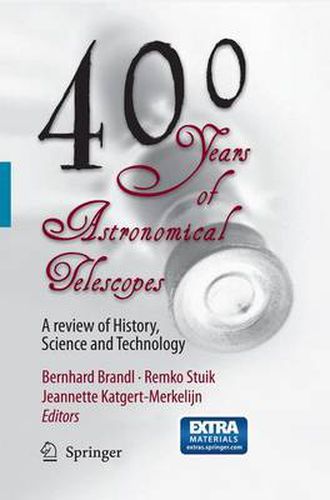Readings Newsletter
Become a Readings Member to make your shopping experience even easier.
Sign in or sign up for free!
You’re not far away from qualifying for FREE standard shipping within Australia
You’ve qualified for FREE standard shipping within Australia
The cart is loading…






This title is printed to order. This book may have been self-published. If so, we cannot guarantee the quality of the content. In the main most books will have gone through the editing process however some may not. We therefore suggest that you be aware of this before ordering this book. If in doubt check either the author or publisher’s details as we are unable to accept any returns unless they are faulty. Please contact us if you have any questions.
Four hundred years ago, on 25 September 1608, the lens maker Hans Lipperhey from Middelburg in the Netherlands traveled to The Hague to apply for a patent regarding his invention of the spyglass . The Commander in Chief of the Dutch armed forces, Prince Maurice of Nassau, was quite impressed. However, since the instrument could be easily copied, Lipperhey was not granted the patent. Nevertheless, within a year Galileo Galilei aimed a telescope that he had built based on the principals of Lipperhey’s device on the skies, forever changing the way astronomy was done.
To celebrate the invention of the telescope and the resulting developments, Leiden Observatory, in cooperation with ESTEC, organized an international meeting on 400 Years of Astronomical Telescopes . The meeting took place from 29 September - 2 October 2008 at the ESTEC conference centre. This book presents the highlights of this meeting under the following categories: History of Optical Telescopes, History of Non-Optical Telescopes, Miscellaneous Aspects and Projects, Fundamental Telescope Technologies, Political and Sociological Aspects, Perspectives for Future Telescopes.
The topical reviews have been written by internationally recognized leaders of the field. This book is intended as a first reference to many technical, historical and social aspects concerning astronomical telescopes. It is equally well suited to professional astronomers as to the interested public.
$9.00 standard shipping within Australia
FREE standard shipping within Australia for orders over $100.00
Express & International shipping calculated at checkout
This title is printed to order. This book may have been self-published. If so, we cannot guarantee the quality of the content. In the main most books will have gone through the editing process however some may not. We therefore suggest that you be aware of this before ordering this book. If in doubt check either the author or publisher’s details as we are unable to accept any returns unless they are faulty. Please contact us if you have any questions.
Four hundred years ago, on 25 September 1608, the lens maker Hans Lipperhey from Middelburg in the Netherlands traveled to The Hague to apply for a patent regarding his invention of the spyglass . The Commander in Chief of the Dutch armed forces, Prince Maurice of Nassau, was quite impressed. However, since the instrument could be easily copied, Lipperhey was not granted the patent. Nevertheless, within a year Galileo Galilei aimed a telescope that he had built based on the principals of Lipperhey’s device on the skies, forever changing the way astronomy was done.
To celebrate the invention of the telescope and the resulting developments, Leiden Observatory, in cooperation with ESTEC, organized an international meeting on 400 Years of Astronomical Telescopes . The meeting took place from 29 September - 2 October 2008 at the ESTEC conference centre. This book presents the highlights of this meeting under the following categories: History of Optical Telescopes, History of Non-Optical Telescopes, Miscellaneous Aspects and Projects, Fundamental Telescope Technologies, Political and Sociological Aspects, Perspectives for Future Telescopes.
The topical reviews have been written by internationally recognized leaders of the field. This book is intended as a first reference to many technical, historical and social aspects concerning astronomical telescopes. It is equally well suited to professional astronomers as to the interested public.